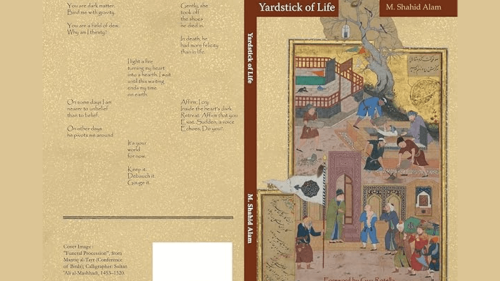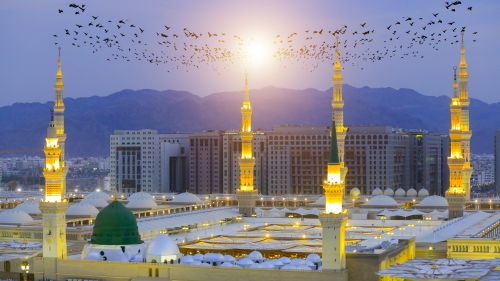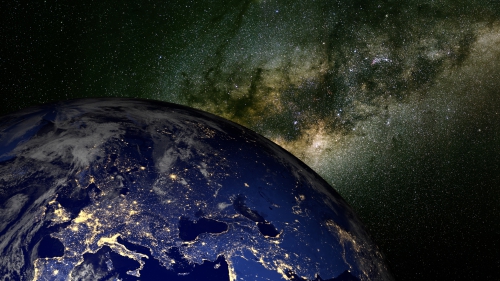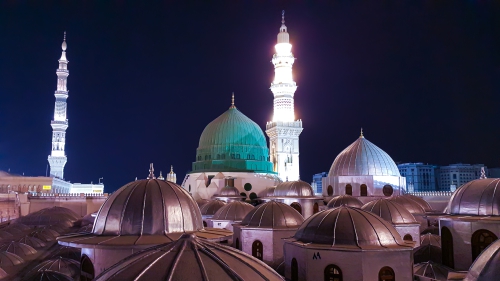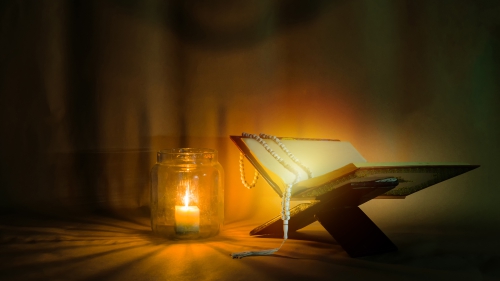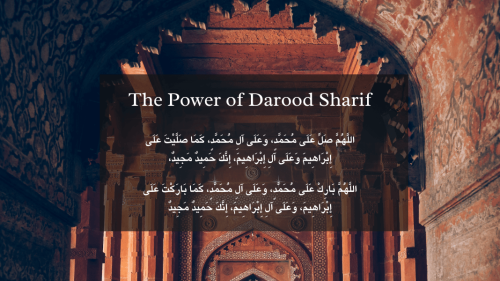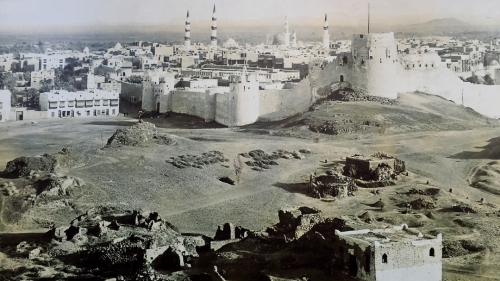Exploring Madinah: A Microcosm of Islamic Message and Culture

This article presents a broad conceptual framework that allows us to comprehend and appreciate both the spiritual and urban components of Madinah. Madinah was as much an abstraction as an urban wonder, so to experience it to its fullest, one must find a balance between the two. Not giving the right attention to each side will be a disservice to Madinah and will result in a person not having the right understanding and appreciation.
To begin with, Islam is the religion of a genuine civilizational awareness and refinement. Thus, one of the reasons for the migration (hijrah) from Makkah, which initially proved inadequate for meeting the requirements of Islam’s inherent enlightenment and sophistication penchants, was to find a more suitable milieu for cultivating the character of the Islamic mission and the identity of its increasing followers. After a period of searching, Madinah established itself at once as an appropriate and inviting place.
At first, there was no Madinah as an integrated and organized urban community. There was merely a geographical area called Yathrib that consisted of several loosely interrelated settlements. It was anything but a cohesive or progressive society. The Prophet (peace and blessings be upon him and his family) was the one who named the place “Madinah”, which means “the City.”
Advancing “Yathrib” to “Madinah” was consistent with the Prophet’s vision for the place and its people. It was also in harmony with the newly created obsessions and aspirations of the populace, echoing the overall atmosphere that could be felt in the air. Madinah was shaping itself as a precursor for the future, as a template for what lay ahead. It was to become an embodiment of the Islamic understanding of civilizational maturity and cultural panache.
Madinah moreover became a benchmark, as well as a wellspring, from which the essence of all the future development blueprints in Muslim societies originated, and to which they all eventually returned for the validation and authentication ends. If at first Madinah was the personification of the Islamic message, it quickly turned into the microcosm of Islamic culture and civilization as well. In fact, the former was the harbinger, plus the vitality and lifeblood, of the latter.
That is why the word Madinah is derived, among other things, from the expressions “maddana” and “tamaddun” which signify “to civilize” and “civilization” respectively. Hence, of the meanings contained in the word Madinah are “urbanity”, “class” and ‘civilization.” That is why, furthermore, Madinah later came to be known as “al-Madinah al-Munawwarah” which means the “Luminous City”, the word “City” standing for Madinah’s ground-breaking civilizational (physical) dimension, and the word “Luminous” for its revolutionary spiritual and also enlightening aspects.
Madinah is likewise known as “Madinatu Rasulillah” which means “the City of Allah’s Messenger”, implying that Madinah’s sheer existence as it is, and everything the city has ever been, were exclusively due to the Prophet’s divine calling and his exceptional modelled-by-revelation personality. As a locus of recurring divine interventions, and the foremost receptacle of the revealed wisdom and guidance, Madinah itself became a holy city.
Madinah has loads of beautiful names, as many as ninety four according to al-Samahudi (d. 1505), the greatest and most trustworthy historian of Madinah. Standing out among those names are “Taybah” (“the Pure”), “Tabah” (“the Good”), “the Home of hijrah or migration”, “the Home of sunnah”, “the Home of salamah (safety, security and integrity)”, “the Home of healing (shifa’)”, “Allah’s land”, “the Queen of cities”, and “the Refuge of faith (iman).”
This means that Madinah, generally, is a good, pleasant, pure, prosperous, safe and therapeutic city. It is an ideal city, and a perfect state, or a utopia, realized. It is a synthesis of the “City of God” and the “City of Man”, whereby the former functions as the cause and the criterion, and the latter as the effect and end product. Certainly, the “City of God” cannot be actualized on earth without the favourable disposition of the “City of Man”, just as the “City of Man” cannot even come to be without the creational divine influence of the “City of God.”
This harmonious state of Madinah is an antithesis to St. Augustine’s – and Rome’s - bifurcation of the elect “City of God” and the damned “City of Man”, and to Le Corbusier’s humanocentric and capitalism-oriented “the Ville Contemporaine” (Contemporary City) as a modernist model city for the future. No wonder the latter was perceived as an assemblage of perfectly engineered and highly functional urban “machines” (buildings, especially houses) to live and work in. If St. Augustine’s objective was an impractical abstraction and spiritualization of man, Le Corbusier’s objective was the polar opposite: the mechanization and subsequent degradation of human talents and value.
The huge number of Madinah’s beautiful and consequential names points towards the distinguished reputation of Madinah not only on earth, but as well in the spiritual kingdom. Such was the inference of al-Samahudi in his magnum opus on Madinah titled “Wafa’ al-Wafa bi Akhbar Dar al-Mustafa.” The sheer proliferation in the number of nomenclatures for Madinah demonstrated that the city's true nature was beyond the power of human verbalization. Madinah's uniqueness and spirit could not be expressed in words (names).
That is so regardless of what people may do to Madinah, or what Madinah may undergo on account of the vicissitudes of time and space. Indeed, there were times when Madinah was afflicted by natural or man-made disasters - such as famine, insufficient precipitation and wars - but never in the slightest was its true spiritual, psychological and historical forte affected thereby. The two sets of metiers operate at two different levels, and so do human experiences and appreciations of them.
There is nothing that can strike out Madinah’s relentless fascination and appeal. Undeniably, Madinah reigns; she is not to be reigned over. She is sovereign and in control – in the ethereal sense of the words – not to be controlled by anybody or anything. People can neither rule Madinah nor be rulers inside it. They can only serve it in various capacities of theirs, which span from the lowest to the highest tiers of human qualifications and ranks. This certainly sets the criteria for enticing some people to Madinah and deterring others.
For that reason will even Dajjal (the great Deceiver whose emergence will spell the imminence of the end of the world) be unable to enter Madinah – and Makkah - despite him being able to enter each and every other land. The Prophet said - as reported by al-Bukhari and Muslim - that Dajjal will not come to any of the entrances of Makkah and Madinah but there will be angels standing in rows guarding them.
As per another hadith reported by al-Bukhari, Madinah “is like a pair of bellows (furnace); it expels its impurities and brightens and clears its good.” Surely, Madinah is not suitable for everyone or for every idea and lifestyle.
Madinah’s character is transcendent, just like the potencies and causes that made Madinah what it is. Were it not for the prescience and determination of Madinah and its early generations, the world as we know it would not exist, nor would the authentic golden age of Islam and its civilization. It is quite clear that every pilgrim and visitor to Madinah need to understand that they would not be in their current state were it not for the productivity and efficiency of Madinah.
We all owe Madinah an immense debt of gratitude. People come to Madinah to re-discover themselves and their sense of purpose. In a way, they do not come to Madinah; they return to it. They revert to their ontological source.
Madinah was the first to be fully purified by the Prophet, ridding it of every trace of polytheism and disbelief. Both the physical and spiritual cleanliness, beauty and wealth of the city were embraced. The city then became the launching pad for the purification, beautification, enrichment and enlightenment of the world. Islam became the latter’s liberator and saviour, intimating in the process that whenever the world loses its orientation and moral-cum-spiritual compass, it is only the message perennially characterized by the jurisdiction of Madinah that can provide the answers.
Madinah’s being a holy land, the Prophet’s city, the home of the migration (hijrah), the first Islamic capital city, the blessed illuminant that irradiated the world, the eternal source of Islamic culture and civilization, and the context of the most decisive episodes of the history of Islam – all these elements help Madinah transport its visitors from a world of physical and mundane realities to one of surreally higher meanings, bonds and experiences. Madinah is like a dimension-travel and sensations-alteration milieu. Visiting it feels like taking a journey through a different dimension, a place where senses are heightened and altered. What is assured is that no person remains indifferent or unaffected while in Madinah. In its bosom, people are bound to find a purpose, and to uplift sense, essence and self.
In passing, scholars have debated for centuries whether Makkah or Madinah is superior and has more significance. No doubt, the debates are futile, not bringing the Muslim mind to any productive conclusion. What can be put forward, however, is that both Makkah and Madinah are extraordinary holy cities. As a pair, they are one of a kind. They are twins, as it were. As such, they are not supposed to challenge, but rather complement one another. They should join forces in forming as much a horizontal axis of history as a vertical axis of spirituality, representing in unison the metaphysical justification of existence.
The otherworldly destinies of Makkah and Madinah stand for the destiny of mankind and of the phenomenon of creation as a whole. The two holy cities are the reason why the universe and man as the vicegerent of Almighty Allah on earth, exist. Such a truth, and a potential avalanche of emotions associated with it, ought to be treasured and nurtured, not held back.
In order to find a sense and purpose, a person is to lose himself in the dominion of Madinah’s godsends and splendours. Escape the world in Madinah in order to find yourself and your place in the metaphysical realm; and disengage yourself from the creation in order to draw closer to the Creator and set the groundwork for a “union” with Him.
As long as one is in search of the truth in Madinah, the truth is in search of him. They are bound to converge at any juncture of the city’s holiness and its multifaceted functions, such as in the Prophet’s mosque, in the Rawdah, next to the Prophet’s holy grave and its burial chamber, in the Quba’ mosque, at the Uhud battlefield and its martyrs’ burial ground, in the cemetery of al-Baqi’, or simply anywhere while in a contemplative mood one walks through the streets, piazzas, gardens and the numerous historical sites of the city.
Like so, without doubt, Madinah is the greatest heavenly gift to man. It is a sign of a Muslim personal and collective existential affluence. It is a matchless asset and lasting miracle.
The Prophet encapsulated this extraordinary standing of Madinah with the following words, as narrated by al-Bukhari in his “Sahih”: “Yemen will be conquered and some people will migrate (from Madinah) and will urge their families, and those who will obey them to migrate (to Yemen) although Madinah will be better for them; if they but knew. Sham will also be conquered and some people will migrate (from Madinah) and will urge their families and those who will obey them, to migrate (to Sham) although Madinah will be better for them; if they but knew. Iraq will be conquered and some people will migrate (from Madinah) and will urge their families and those who will obey them to migrate (to Iraq) although Madinah will be better for them; if they but knew.”
In the same vein, the Prophet said, as narrated by al-Bukhari: “Verily, belief (faith) returns and goes back to Madinah as a snake returns and goes back to its hole (when in danger).” This means that as Islam spread from Madinah, it was destined to return to it, like a snake that crawls out of its lair and slithers around the land, only to go back to its refuge. As all other places in the world become spiritually and morally degenerate, Islam will eventually retreat to Madinah. The wheel will come full circle.
Topics: Hijrah (Migration), Islamic Culture And Civilization, Madinah (Medina), Prophet Muhammad (S)
Views: 659
Related Suggestions







